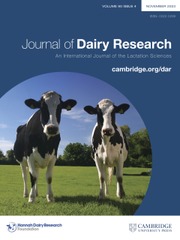Article contents
Effects of management practices on the welfare of dairy donkeys and risk factors associated with signs of hoof neglect
Published online by Cambridge University Press: 10 November 2017
Abstract
This Research Paper aimed to investigate donkey welfare in dairy husbandry systems and to identify the potential factors affecting it at animal level. In 2015, twelve dairy donkey farms (19–170 donkeys per farm, mean = 55 ± 48), distributed throughout Italy, were visited. On each farm, the Animal Welfare Indicators (AWIN) welfare assessment protocol for donkeys was used by two trained assessors to evaluate the welfare of animals for a total of 257 donkeys assessed. The protocol includes animal-based indicators that were entered in a digitalised system. Prevalence of different scores at individual, farm and category level were calculated. Farmers were asked to fill out a questionnaire including information regarding the management of donkeys and their final destination. Answers to the questionnaire were then considered as effects in the risk factor analysis whereas the scores of the animal-based indicators were considered as response variables. Most of the donkeys (80·2%) enjoyed a good nutritional status (BCS = 3). 18·7% of donkeys showed signs of hoof neglect such as overgrowth and/or incorrect trimming (Min = 0% Max = 54·5%). Belonging to a given farm or production group influenced many of the welfare indicators. The absence of pasture affected the likelihood of having skin lesions, alopecia, low BCS scores and a less positive emotional state. Lack of routine veterinary visits (P < 0·001) and having neglected hooves (P < 0·001) affected the likelihood of being thin (BCS < 3). Belonging to specific production groups, lack of access to pasture and showing an avoidance reaction to an approaching human (AD) resulted in risk factors associated with a higher prevalence of signs of hoof neglect. Our results support the idea that lack of knowledge of proper donkey care among owners was behind many welfare issues found.
Keywords
Information
- Type
- Research Article
- Information
- Copyright
- Copyright © Hannah Dairy Research Foundation 2017
References
- 14
- Cited by

